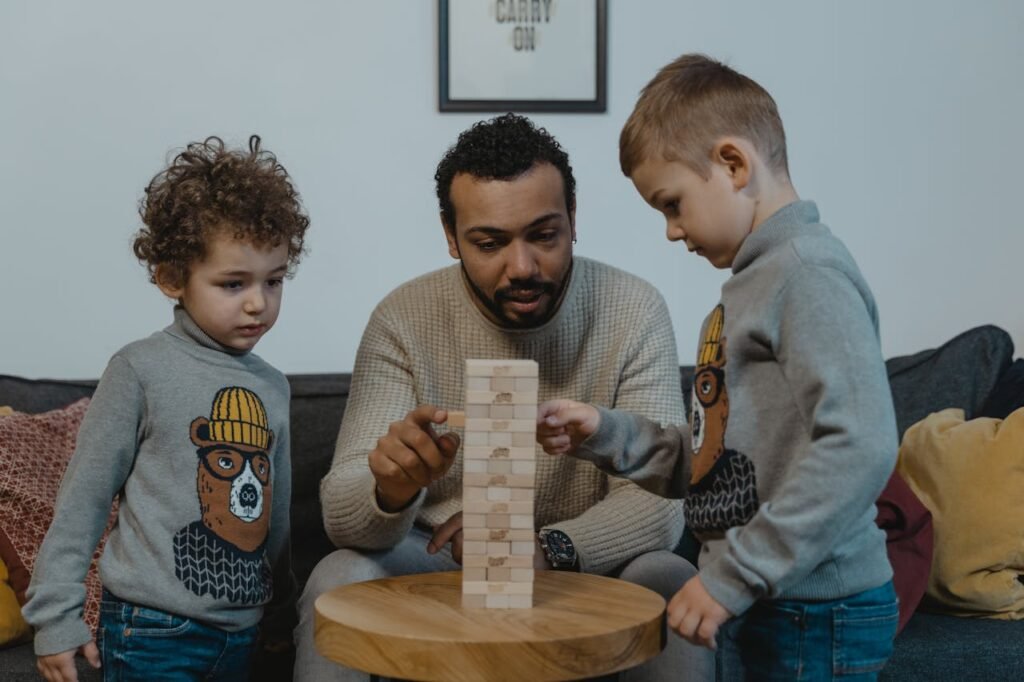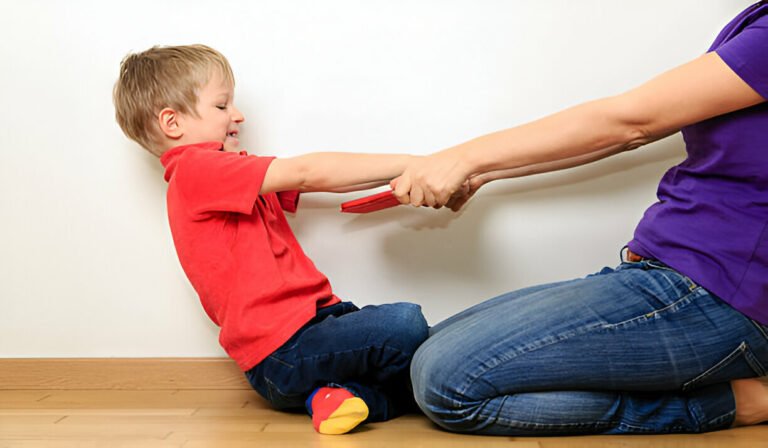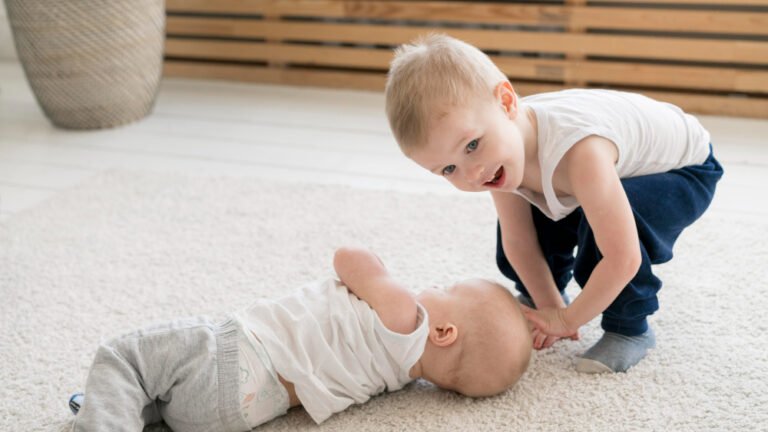effective discipline strategy for kids who don’t listen

Every parent knows the frustration. You’ve asked your child to clean their room, put away their toys, or simply come to dinner—and they act like you’re speaking a foreign language. The reality is that most children can hear you perfectly fine. The real question isn’t whether kids are listening, but why they’re choosing not to follow through.
Understanding why children don’t respond to instructions is the first step toward building better communication and cooperation in your home. This guide will explore the most common reasons behind disobedience and provide you with practical, research-backed strategies that actually work.
Why Kids Don’t Listen: The Real Reasons Behind Disobedience
Before jumping into discipline strategies, it’s important to understand what’s really happening when your child ignores you. Most of the time, it’s not defiance—it’s something else entirely.
Medical Factors to Consider First
If your child consistently ignores instructions, start by ruling out hearing problems or other medical issues. A quick visit to your pediatrician can help determine if there are any physical barriers to listening. A simple at-home test: quietly ask if anyone wants ice cream from another room. If your child comes running, their hearing is likely fine.
Common Reasons Children Don’t Follow Instructions
Research shows that children may not respond to parental requests for numerous reasons:
- Developmental limitations: Young children have limited attention spans and may genuinely forget what you asked
- Emotional overwhelm: When kids are hungry, angry, lonely, tired, or stressed, their ability to process requests decreases significantly
- Hyperfocus: Children often become absorbed in their current activity and struggle to shift attention
- Need for autonomy: Kids may resist instructions as a way to assert independence and control
- Unclear expectations: Instructions that are too complex or vague can confuse children
- Poor timing: Asking children to do tasks when they’re engaged in something important to them reduces compliance
Understanding these factors helps you approach discipline with empathy rather than frustration.
The Difference Between Discipline and Punishment

Many parents use the terms “discipline” and “punishment” interchangeably, but they serve very different purposes. Punishment focuses on making children suffer consequences for their actions, while discipline teaches appropriate behavior and helps children develop self-control.
Effective discipline is about setting clear boundaries and following through consistently. It’s not about power struggles or forcing immediate compliance through fear. Instead, it aims to help children understand expectations and develop the skills they need to make better choices.
Setting the Stage for Success
Before implementing specific discipline strategies, you need to create an environment where good behavior can flourish. This foundation makes everything else more effective.
Establishing Clear, Realistic Rules
Children thrive when they understand what’s expected of them. Create family rules that are:
- Simple and specific: “Put your dishes in the dishwasher after meals” works better than “Be helpful”
- Age-appropriate: A 4-year-old can pick up toys, but shouldn’t be expected to organize their entire room independently
- Consistent: Rules should apply the same way every day, not change based on your mood
Communicating Expectations Effectively
How you communicate matters as much as what you say. Research shows that certain communication techniques dramatically improve compliance:
- Make eye contact: Get down to your child’s level and look them in the eye when giving instructions
- Use simple language: Keep sentences short and avoid lengthy explanations
- Ask for repetition: Have your child repeat back what you asked to ensure understanding
- Give clear timeframes: “Please put your toys away before dinner” is more effective than “Put your toys away soon”
Modeling Good Behavior
Children learn more from what they see than what they hear. If you want your child to speak respectfully, handle frustration calmly, and follow through on commitments, you need to demonstrate these behaviors yourself.
Effective Discipline Strategies That Actually Work

Now let’s explore specific strategies that have been proven effective for encouraging cooperation and teaching appropriate behavior.
Positive Reinforcement and Praise
While punishment gets a lot of attention, positive reinforcement is actually more effective for changing behavior long-term. However, not all praise is created equal.
Effective praise strategies:
- Be specific: “I noticed you put your backpack in the right spot” works better than “Good job”
- Focus on effort: “You worked really hard to clean your room” encourages persistence
- Acknowledge feelings: “I can see you were frustrated, but you handled it well”
Avoid empty praise: Constant “good job” responses can actually reduce motivation over time. Instead, simply say “thank you” when children help or acknowledge their efforts without judgment.
Using Time-Outs Effectively
Time-outs can be an effective tool when used correctly, but many parents implement them in ways that reduce their effectiveness.
How to use time-outs properly:
- Give a warning first: “If you continue hitting, you’ll need to take a time-out”
- Keep it brief: One minute per year of age is sufficient
- Choose the right location: A boring spot away from toys and screens works best
- Stay calm: Don’t lecture or argue during the time-out
- Follow up: After the time-out, briefly explain why it happened and move on
Remember, time-outs should be reserved for serious behavior problems, not minor compliance issues.
Offering Choices and Involving Kids in Decision-Making
Children often resist instructions because they feel powerless. Offering controlled choices can reduce power struggles while still ensuring your needs are met.
Effective choice-giving:
- Limit options: “Would you like to brush your teeth before or after putting on pajamas?”
- Make all choices acceptable: Only offer options you’re comfortable with
- Involve kids in problem-solving: “We need to keep the living room tidy. What ideas do you have?”
Natural and Logical Consequences
Sometimes the best teacher is experience itself. Natural consequences occur automatically (forgetting lunch means being hungry), while logical consequences are imposed by parents but directly relate to the behavior.
Examples of logical consequences:
- Toys left out get put away for a day
- Not completing homework means contacting the teacher together
- Treating friends poorly means losing playtime privileges
The key is ensuring consequences are related to the behavior and aren’t just arbitrary punishments.
Consistency is Key
Perhaps the most important factor in effective discipline is consistency. Children need to know that rules and consequences remain the same regardless of their mood, your stress level, or external circumstances.
Creating Predictable Routines
Routines reduce the need for constant instructions and power struggles. When children know what to expect, they’re more likely to cooperate automatically.
Building effective routines:
- Start small: Focus on one routine at a time (like bedtime or morning preparations)
- Use visual reminders: Pictures or checklists help children remember steps
- Practice during calm moments: Don’t wait for crisis times to establish new routines
- Be patient: It takes time for routines to become automatic
Maintaining Consistency Across Caregivers
If you’re co-parenting, consistency between households and caregivers is crucial. Children quickly learn to exploit differences in rules and expectations.
Strategies for consistency:
- Regular communication: Discuss discipline approaches with all caregivers
- Written agreements: Document important rules and consequences
- Flexibility within structure: Allow for different styles while maintaining core expectations
Advanced Strategies for Persistent Challenges

Some children need additional support to develop listening skills and cooperation. These advanced strategies can help when basic techniques aren’t enough.
Working Together on Tasks
Children often respond better when they feel included rather than commanded. Working alongside your child on tasks creates connection and makes the work feel less punitive.
Collaborative approaches:
- Join in: “Let’s clean up this room together”
- Divide tasks: “I’ll handle the books, you take care of the toys”
- Make it social: Use the time to chat and connect while working
The Power of Patience
One of the most effective strategies is simply waiting longer after making a request. Many parents repeat instructions within seconds, but children often need time to process and respond.
How to wait effectively:
- Give clear instruction once
- Wait 5 minutes before repeating
- Stay engaged in your own tasks
- Trust their internal motivation
This approach helps children develop intrinsic motivation rather than relying on external pressure.
Connection Before Correction
The quality of your relationship with your child significantly impacts their willingness to cooperate. Children who feel seen, heard, and valued are more likely to respond positively to requests.
Building connection:
- Spend one-on-one time daily
- Listen without trying to fix
- Show interest in their activities
- Validate their feelings even when you can’t change the situation
When to Seek Additional Help

Sometimes, despite your best efforts, children continue to struggle with listening and cooperation. Knowing when to seek professional support can make a significant difference.
Signs That Professional Help May Be Needed
Consider consulting with professionals if your child:
- Consistently ignores instructions across multiple settings
- Shows extreme emotional reactions to simple requests
- Seems unable to remember or follow multi-step instructions
- Displays aggressive behavior when asked to comply
- Has difficulty with attention or focus in general
Partnering with Pediatricians and Teachers
Your child’s doctor and teachers can provide valuable insights into whether behavior issues might be related to developmental, medical, or learning challenges.
Questions to ask professionals:
- Is this behavior typical for my child’s age?
- Could there be underlying medical issues?
- What strategies work best at school?
- Should we consider additional evaluations?
Working with Mental Health Professionals
Child psychologists and family therapists can help identify underlying issues and provide specialized strategies for challenging behaviors. They can also help you develop more effective communication and discipline approaches.
Building Long-Term Success
Effective discipline isn’t just about stopping unwanted behavior—it’s about helping children develop the skills they need to make good choices throughout their lives.
Teaching Problem-Solving Skills
Instead of simply telling children what to do, involve them in finding solutions. This approach builds critical thinking skills and increases buy-in for following through.
Problem-solving process:
- Identify the problem clearly
- Brainstorm possible solutions together
- Evaluate options and choose one to try
- Set a time to check how it’s working
- Adjust as needed
Developing Emotional Intelligence
Children who understand their emotions and have strategies for managing them are more likely to cooperate and make good choices.
Supporting emotional development:
- Name emotions: “I can see you’re frustrated about bedtime”
- Validate feelings: “It’s hard when you have to stop doing something fun”
- Teach coping strategies: Deep breathing, counting, or taking






